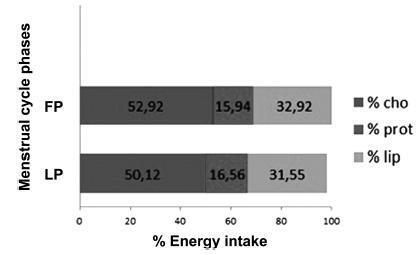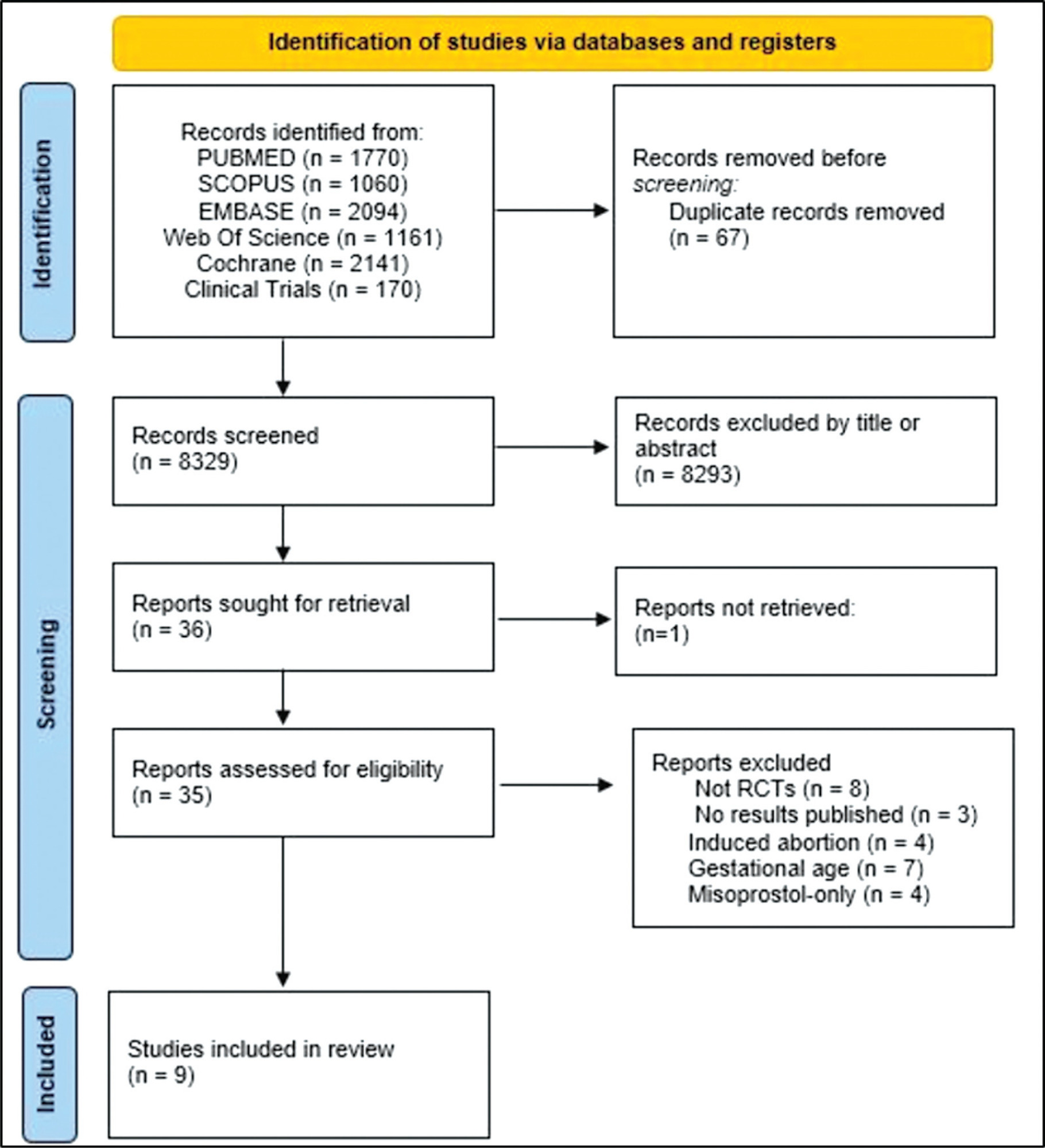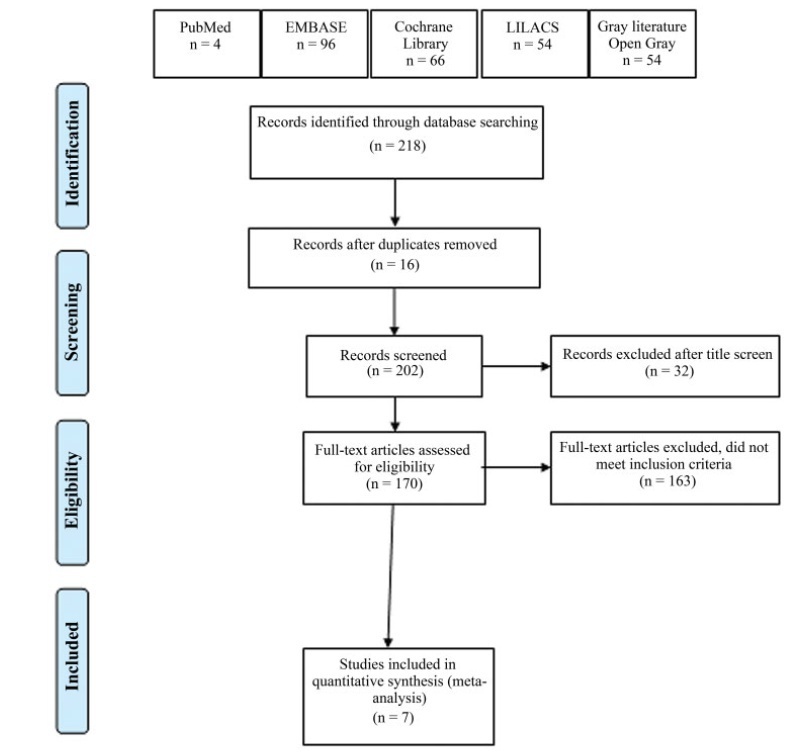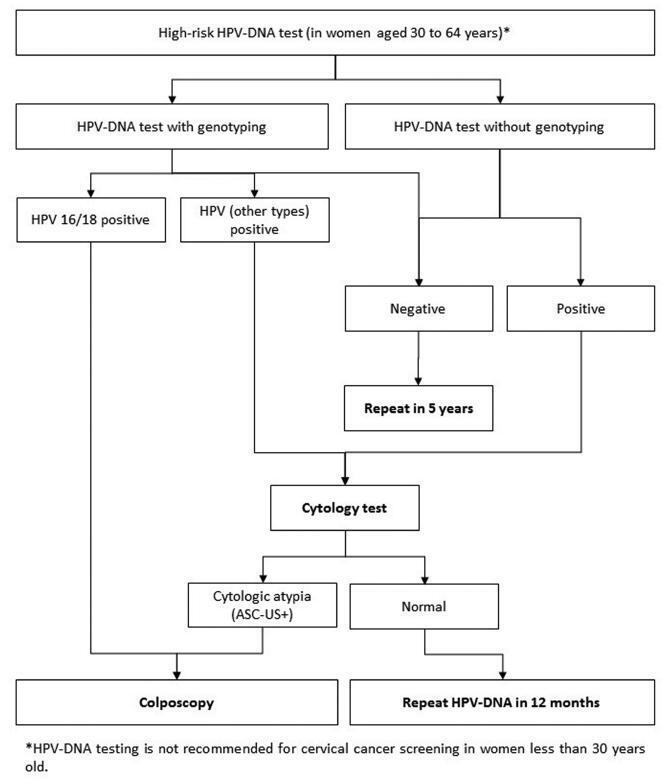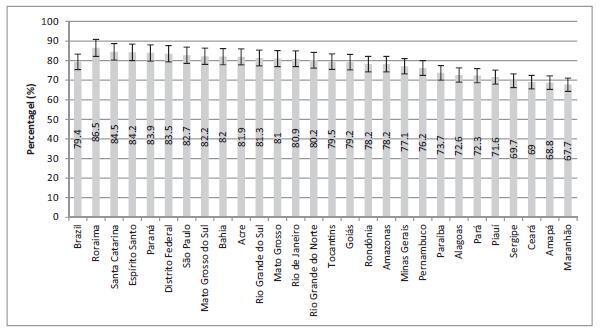-
Original Article04-09-1998
Vaginal hysterectomy: is the laparoscope necessary?
Revista Brasileira de Ginecologia e Obstetrícia. 1998;20(9):537-540
Abstract
Original ArticleVaginal hysterectomy: is the laparoscope necessary?
Revista Brasileira de Ginecologia e Obstetrícia. 1998;20(9):537-540
DOI 10.1590/S0100-72031998000900008
Views110See morePurpose: the laparoscope can be used to convert an abdominal into a vaginal hysterectomy when there are contraindications for the vaginal approach, and not as a substitute for simple vaginal hysterectomy. The purpose of the present study is to discuss the role of laparoscopy in vaginal hysterectomy. Methods: between February 1995 and September 1998, 400 patients were considered candidates for vaginal hysterectomy.Exclusion criteria included uterine prolapse, adnexal tumor and uterine immobility. The Heaney technique was used, and different morcellation procedures were employed for the removal of enlarged uteri. Results: the mean age and parity was 46.9 years and 3.2 deliveries, respectively. Twenty-nine patients (7.2%) were nulliparous, and 104 (26.0%) had never delivered vaginally. Three hundred and three patients (75.7%) had a history of previous pelvic surgery, the most common being cesarean section (48.7%). The most frequent indication was leiomyoma (61.2%), and the mean uterine volume was 239.9 cm³ (30-1228 cm³). Vaginal hysterectomy was successfully performed in 396 patients (99.0%), and 73 surgeries (18.2%) were done by residents. The mean operative time was 45 min. Diagnostic/operative laparoscopy was performed in 16 patients (4.0%). Intraoperative complications included 6 cystotomies (1.5%) and one rectal laceration (0.2%). There were four conversions (1.0%) to the abdominal route. Postoperative complications occurred in 24 patients (6.0%). Two hundred and eighty-one patients (70.2%) were discharged 24 h after surgery. Conclusions: the laparoscope does not seem to be necessary in cases were the uterus is mobile and there is no adnexal tumor. The main role of the laparoscope may be to increase the awareness of gynecologists to the possibility of a simple vaginal hysterectomy in the majority of cases.
-
Original Article04-09-1998
Ultrasound screening for Down syndrome using a multiparameter score
Revista Brasileira de Ginecologia e Obstetrícia. 1998;20(9):525-531
Abstract
Original ArticleUltrasound screening for Down syndrome using a multiparameter score
Revista Brasileira de Ginecologia e Obstetrícia. 1998;20(9):525-531
DOI 10.1590/S0100-72031998000900006
Views163See morePurpose: to calculate sensitivity, specificity and positive and negative predictive values for multiparameter ultrasound scores for Down’s syndrome. Patients and Methods: sensitivity and specificity for Down syndrome were calculated for ultrasound scores in a prospective study of ultrasound signs from 16 to 24 weeks in a high-risk population who denied invasive procedures after genetic counselling. The signs and scores were: femur/foot length < 0,9 (1), nuchal fold > 5 mm (2), pyelocaliceal diameter > 5 mm (1), nasal bones < 6 mm (1), absent or hypoplastic fifth median phalanx (1) and major structural malformations (2). Complete follow-up was obtained in each case. Genetic amniocentesis was proposed in the case of score 2 or more. Results: a total of 963 patients were examined from October 93 to December 97 at a mean gestational age of 19.6 (range 16 -24) weeks. Women's age ranged from 35 to 47 years (mean 38.8) and 18 Down syndrome cases were observed (1.8%). Sensitivity was 94.5% (17/18) for score 1 and 73% (13/18) for score 2 (false positive rate of 9.8% for score 1 and 4.1% for score 2). Individual sign sensitivity and specificity were: femur/foot = 16.7% (3/18) and 96.8% (915/945); nasal bones = 22.2% (4/18) and 92.1% (870/945); nuchal fold = 44.4% (8/18) and 96.5% (912/945); pyelic diameter = 38.9% (7/18) and 94.3% (891/945); absent phalanx = 22.2% (4/18) and 98.5% (912/945); malformation = 22.2% (4/18) and 98.2% (928/945). Conclusions: the overall sensitivity for score 1 was high but false positive rates were also high. For score 2, sensibility was still good (73%) and false positive rate was acceptable (4.1%). Positive and negative predictive values can be calculated for each prevalence (women's age). More cases are needed to reach final conclusions about this screening method (specially in a low-risk population) although this system has been useful for high-risk patients who deny invasive procedures.
-
Original Article04-09-1998
Arterial doppler velocimetry in pregnant women with previous idiopathic intrauterine growth retardation
Revista Brasileira de Ginecologia e Obstetrícia. 1998;20(9):517-524
Abstract
Original ArticleArterial doppler velocimetry in pregnant women with previous idiopathic intrauterine growth retardation
Revista Brasileira de Ginecologia e Obstetrícia. 1998;20(9):517-524
DOI 10.1590/S0100-72031998000900005
Views205See morePurpose: to determine the behavior of doppler velocimetry during the course of risk pregnancies and to compare the perinatal results obtained for concepti with retarded intrauterine growth (RIUG) with those for concepti considered adequate for gestational age (AGA). Methods: a prospective study of the evolution of doppler ultrasound was made in 38 pregnant women with of idiopathic intrauterine growth retardation (IUGR) in previous pregnancy. A relationship was established between this antecedent and the new pregnancy. The pregnant women studied were divided into two groups in agreement with their neonates birthweight. Group 1 was associated with IUGR and group 2 with adequate birth weight. IUGR was confirmed in 23.7% of the cases. Umbilical and uterine artery doppler velocimetry was performed from 20 to 40 weeks of gestation. Middle cerebral artery doppler velocimetry was analyzed after 28 weeks of gestation, twice a month, being the last valued examination before birth. Results: the uterine and umbilical artery ratio at 24 and 28 weeks of gestation, respectively, correlated with the presence of IUGR. There was no difference between the two groups regarding the presence or absence of a small notch in the uterine artery wave form and middle cerebral artery doppler velocimetry ratio, at the last examination before birth. There was a relationship between neonatal stay in hospital for more than three days and the presence of IUGR. Conclusions: doppler ultrasound should be used in the follow-up of cases with a high risk of IUGR. It allows the detection of the fetuses at high risk of hypoxia and, by interrupting the pregnancy, fetal distress-related complications may be avoided.
-
Original Article04-09-1998
Prophylactic antibiotic treatment in obstetrics: comparison of regimens
Revista Brasileira de Ginecologia e Obstetrícia. 1998;20(9):509-515
Abstract
Original ArticleProphylactic antibiotic treatment in obstetrics: comparison of regimens
Revista Brasileira de Ginecologia e Obstetrícia. 1998;20(9):509-515
DOI 10.1590/S0100-72031998000900004
Views123Purpose: to evaluate the efficacy of four antibiotic regimens in puerperal infection prophylaxis. Patients and Methods: According to vaginal or abdominal delivery and risk the presence or not of factors for puerperal infection, the patients were allocated to groups of low, medium and high risk for its development. Between March 1994 and June 1997 2,263 patients were evaluated. Results: the incidence of puerperal infection was different in each group. It was 3.1% in the low risk group, where no antibiotic was given, and 8.5% in the high risk group where all patients received three doses of 1 g EV cefalotin at six-hour intervals. In the medium risk group, the incidence of puerperal infection was 5.3% for the patients who used three doses of 1 g EV cefoxitin; 5.1% for those who used three doses of 1 g EV cefalotin; 4.0% when a single cefoxitin dose was used and 3.4% when a single cefalotin dose was used. Conclusions: it is not necessary to use prophylactic antibiotic therapy in low risk patients and the first generation cephalosporins (cefalotin) are as efficacious as the second generation cephalosporins (cefoxitin) to prevent puerperal infection, independent of the applied dosage. Cefalotin seems to be effective in preventing puerperal infection in patients at high risk.
Key-words Antibiotic prophylaxisCesarean sectionDelivery, vaginalPuerperal infectionRupture of membranes, prematureSee more -
Original Article04-09-1998
Chronic effects of primaquine diphosphate on pregnant rats
Revista Brasileira de Ginecologia e Obstetrícia. 1998;20(9):505-508
Abstract
Original ArticleChronic effects of primaquine diphosphate on pregnant rats
Revista Brasileira de Ginecologia e Obstetrícia. 1998;20(9):505-508
DOI 10.1590/S0100-72031998000900003
Views157See morePurpose: to evaluate the chronic action of primaquine diphosphate on the pregnancy of female albino rats. Methods: sixty pregnant female rats, separated into six groups, were used. Group I received daily, by gavage, 1 ml of distilled water from day zero to the 20th day of pregnancy (control group). The female rats of the other groups also received daily, by gavage, during the same period of time the volume of 1 ml containing gradually concentrated primaquine diphosphate solution: 0.25 mg/kg, group II; 0.50 mg/kg, group III; 0.75 mg/kg, group IV; 1.5 mg/kg, group V and 3.0 mg/kg, group VI. The maternal weights were considered on day zero and on the 7th, 14th and 20th days of pregnancy, when the matrices were sacrificed. Results: the results showed that primaquine diphosphate, in the used doses, did not interfere with none of the following variables: maternal weight, newborn weight, medium individual weight of fetuses, weight of the group of placentas and medium individual weight of the placentas, implantation number, number of placentas and number of fetuses, when compared with the control group. Also there was no case of reabsorption, malformation, maternal mortality or intrauterine death, in any of the studied groups. Conclusion: in the conditions of the study there were no contraindications for the continuous use of primaquine diphosphate during the pregnancy of the female rat.
-
Original Article04-09-1998
Comparison between active management with oxytocin and expectant management for premature rupture of membranes at term
Revista Brasileira de Ginecologia e Obstetrícia. 1998;20(9):495-501
Abstract
Original ArticleComparison between active management with oxytocin and expectant management for premature rupture of membranes at term
Revista Brasileira de Ginecologia e Obstetrícia. 1998;20(9):495-501
DOI 10.1590/S0100-72031998000900002
Views154See moreObjective: to compare the expectant versus active management with oxytocin in a Brazilian population of pregnant women with premature rupture of membranes (PROM) at term. Methods: a prospective, randomized and multicenter clinical trial was performed, evaluating variables concerning the time from PROM until the onset of labor and delivery, and maternal and neonatal hospitalization periods. Two hundred pregnant women with PROM at term were selected from four public hospitals in São Paulo state, from November 1995 to February 1997. They were randomly divided into two groups: active management, with oxytocin induction of labor until 6 h of PROM; and expectant management, waiting for the spontaneous onset of labor up to 24 h. The data were analyzed with the Epi-Info and SPSS-PC+ packages, using the statistical c², Student’s t and log-rank tests. Results: the results indicate that the differences between the two managements concern to the longer time needed for the expectant management group until onset of labor and delivery, besides the higher number of women and neonates who remained in hospital for more than three days. Conclusions: the time between admission and onset of labor and delivery, and also the latent period were longer in the expectant management group.
-
04-09-1998
Ética em pesquisa
Revista Brasileira de Ginecologia e Obstetrícia. 1998;20(9):494-494
Abstract
Ética em pesquisa
Revista Brasileira de Ginecologia e Obstetrícia. 1998;20(9):494-494
-
04-09-1998
Estudo Controlado e Randomizado para Prevenção de Infecção Pós-Cesárea com Penicilina e Cefalotina
Revista Brasileira de Ginecologia e Obstetrícia. 1998;20(7):424-424
Abstract
Estudo Controlado e Randomizado para Prevenção de Infecção Pós-Cesárea com Penicilina e Cefalotina
Revista Brasileira de Ginecologia e Obstetrícia. 1998;20(7):424-424
DOI 10.1590/S0100-72031998000700011
Views61Estudo Controlado e Randomizado para Prevenção de Infecção Pós-Cesárea com Penicilina e Cefalotina […]See more
Search
Search in:
Tag Cloud
Pregnancy (252)Breast neoplasms (104)Pregnancy complications (104)Risk factors (103)Menopause (88)Ultrasonography (83)Cesarean section (78)Prenatal care (71)Endometriosis (70)Obesity (61)Infertility (57)Quality of life (55)prenatal diagnosis (51)Women's health (48)Maternal mortality (46)Postpartum period (46)Pregnant women (45)Breast (44)Prevalence (43)Uterine cervical neoplasms (43)




